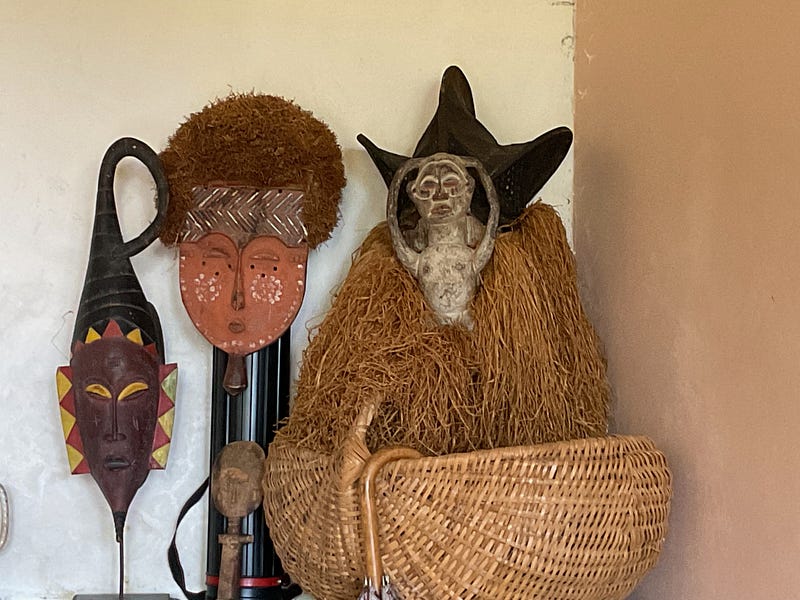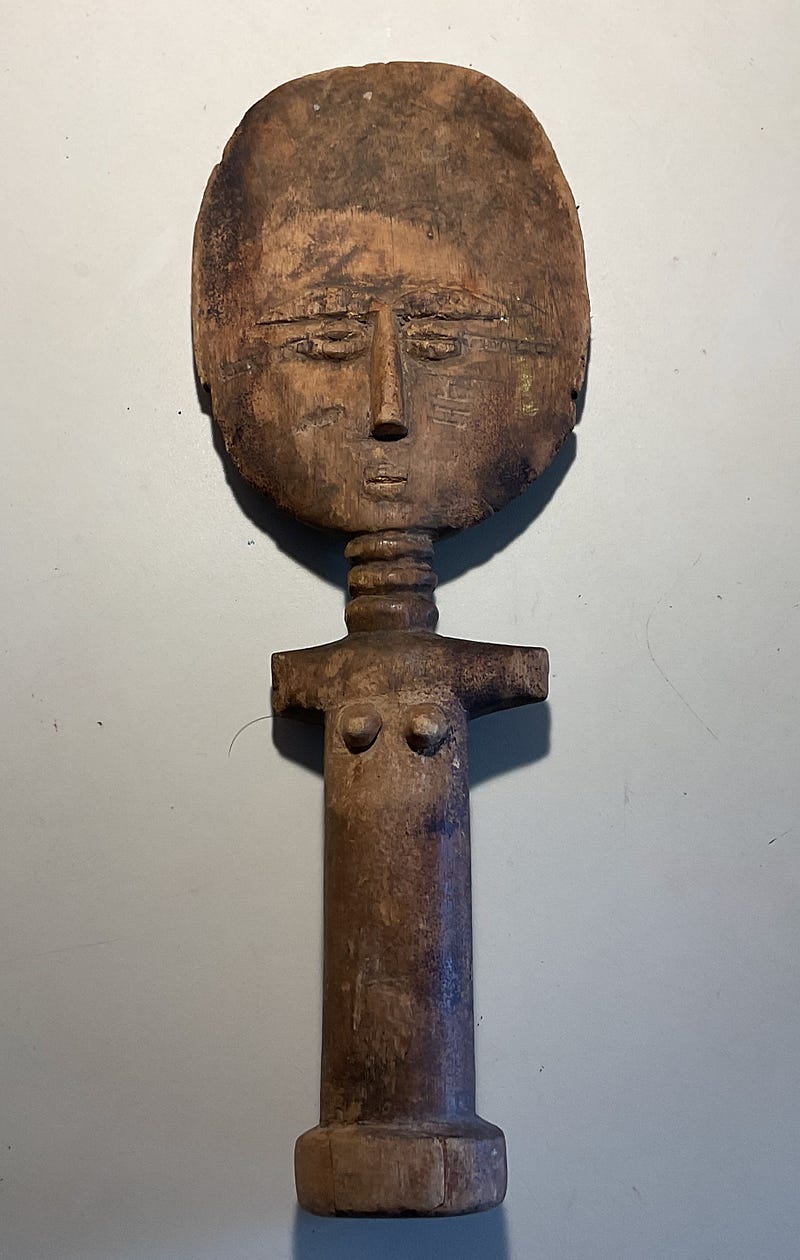Navigating Connections: A Journey Through Education and Art
Written on
Chapter 1: The Power of Connection
Our existence is fundamentally about relationships and the ability to leverage the energy of the networks we cultivate. Moving beyond the confines of segregation into the multifaceted realm of desegregation, I previously discussed my entry into what Jonathan Kozol described as "Savage Inequalities." Although he was referring to East St. Louis, there were striking parallels with Missouri's largest school district during that period.
As a white woman, I find it challenging to articulate the privilege I experienced during my time in the Kansas City Public Schools, particularly while involved in the desegregation Magnet School initiative.
For over a decade, $1.3 billion was invested into a deteriorating, dysfunctional educational system. This monumental project was something I contributed to as I navigated through chaos.
After spending about four years in an inconsistent art instruction environment, I was ready for a change. I had been assigned to four different schools across the extensive Kansas City School District, teaching five 55-minute art classes each day I was present.
This erratic system failed to provide a solid foundation for administrators, teachers, parents, and children to grasp the abstract concepts of art. The crucial links to other core subjects were lost in this inconsistent approach, and resources were often scant or damaged by unruly students or teachers striving to do their best.
It felt like a barren landscape of survival.
Then, the wheels of desegregation began to turn. Funds were injected into the broken system. Schools were rebuilt, and outdated textbooks were replaced. Every effort was made to attract the best educators available.
An Opportunity for Growth
With the restructuring of the Department of Visual and Performing Arts, new roles became available. I had established a trustworthy reputation within the department and a long-standing connection with the Director. I advocated for a dedicated school assignment, which would allow me to focus on a single school and manage a maximum of 25 classes per week.
My request was granted. At last, I could develop a noteworthy program. I was able to forge a strong rapport with one building administrator, a dedicated faculty, and a consistent group of students.
The district lacked a formal art curriculum, granting me creative freedom to design my own. Drawing from my earlier chaotic experiences, I had concluded that if my daughter could successfully complete the elementary projects I devised, older students would likely thrive with the same lessons.
Student success was vital to foster trust in this challenging environment. Concurrently, I dedicated efforts to build connections with classroom teachers and our administrator. These intertwined relationships laid the groundwork for the program's success, cultivating a community of learners that nurtured our students' achievements.
We employed a straightforward approach, beginning with line, moving to shape, pattern, and form. Gradually, I incorporated seasonal themes, cultural art, and classical art history lessons. Field trips were organized to complement our studies, including a school-wide visit to the local American Royal, which contributed to our success in The American Royal Art contest.
Although the American Royal was originally established by Kansas City's white business elite, it was crucial for my students to be recognized as the intelligent, inquisitive individuals they truly were within the broader community.
I collaborated with The Nelson Atkins Museum of Art to provide scholarships for my most promising students to attend their educational classes. Our trips to the gallery allowed us to engage with art in a meaningful way, transforming us into scholars rather than mere spectators.

Creative Resources from the Community
I had already formed partnerships with local lumber yards to collect small wood scraps for our sculptures. A significant connection with a local paper recycling plant provided a variety of interesting paper textures for our projects. The most remarkable contribution was large feed bags, which I could repurpose into full-body masks for our African Art unit.
Incorporating my personal art collection into our lessons helped strengthen my connection with the students. By tapping into our collective ancestral memories, our art projects flourished, sparking a wave of creativity.

Recognition and Community Building
Our artwork began to grace the breakfast tables at the Superintendent’s monthly community gala, establishing our reputation through art.
My ongoing quest for more resources has been both a blessing and a challenge, sometimes at the cost of my family life. While building my educational empire, I simultaneously pursued my Master’s degree abroad, bringing my nearly seven-year-old daughter along to explore the art I had only studied in textbooks. My husband chose to remain home, seeking his own path.
Upon my return, I applied for a position as District Art Resource Teacher in the Central Office, a role that emerged during the restructuring of the Magnet School program. However, I was unprepared for the chaos that awaited me in a department long hindered by incompetence.
This position presented numerous opportunities and allowed me to forge strong connections for positive change, but it came at the cost of my 17-year marriage. With the support of my family, I grew stronger through these challenges.
The Heartbreak of Change
Transitioning away from my small, supportive community was more difficult than anticipated. The upheaval of my new role in the Central Office was overwhelming. I took a silent, contemplative weekend at a Buddhist retreat to heal from the loss of my hard-earned community.
Meditating on my grief, I experienced a profound physical ache in my heart. The guiding Guru encouraged me to embrace that pain. Through focused attention, I was able to release it.
A Lasting Goodbye
I held on to a poignant moment when a student remarked, “Mrs. Swezy! Yeah, she’s white, but her heart is black.” This remains one of the most touching compliments I have ever received.
The Golden Thread of Connection
Today, we refer to it as networking—a crucial element in both local and global interactions. The strength of the connections we foster propels us forward on our journeys. Simple gestures like a warm greeting or a friendly smile can lead to unexpected opportunities.
You never know how these small openings might blossom into significant breakthroughs in your life. I wish you the best as you build your own bridges, and may success accompany you in all your endeavors.
Thank you for staying with me through this reflection.

Chapter 2: The Influence of Art in Education
In the first video, "My PERFECT Version of Universal Studios Florida!" we delve into a creative exploration of a personal experience at a renowned theme park, showcasing how art and education intertwine in everyday life.
The second video, "I Rode EVERYTHING At Universal Studios in ONE DAY Without Paying to Skip the Lines," highlights innovative approaches to experiencing attractions without the stress of long waits, demonstrating resourcefulness similar to what we apply in educational settings.